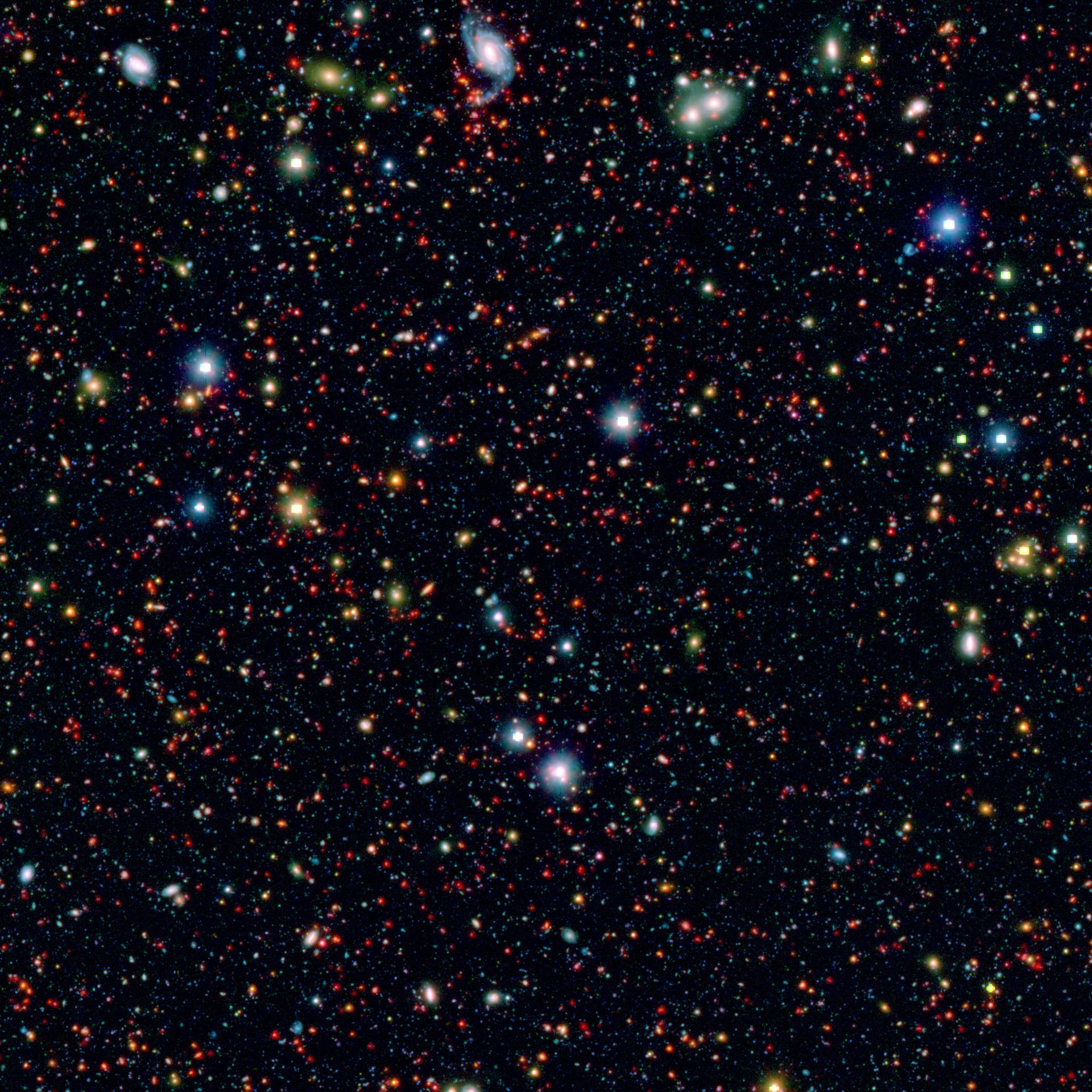Hubble Space Telescope takes its largest near-infrared image ever
It will help scientists better understand the formation and evolution of some of earliest galaxies in the universe

Your support helps us to tell the story
From reproductive rights to climate change to Big Tech, The Independent is on the ground when the story is developing. Whether it's investigating the financials of Elon Musk's pro-Trump PAC or producing our latest documentary, 'The A Word', which shines a light on the American women fighting for reproductive rights, we know how important it is to parse out the facts from the messaging.
At such a critical moment in US history, we need reporters on the ground. Your donation allows us to keep sending journalists to speak to both sides of the story.
The Independent is trusted by Americans across the entire political spectrum. And unlike many other quality news outlets, we choose not to lock Americans out of our reporting and analysis with paywalls. We believe quality journalism should be available to everyone, paid for by those who can afford it.
Your support makes all the difference.The Hubble Space Telescope has taken its largest near-infrared image yet, covering a swath of sky eight times larger than usual for the venerable old space telescope.
It’s an image, and the demonstration of a technique, that will help scientists better understand the formation and structure of distant galaxies, as well as queue up targets for the more advanced James Webb Space Telescope.
The new image is available for download from the Mikulski Archive for Space Telescopes, but at 19 gigabytes, it is a very large image file.
In a preprint of a paper that will be published in the The Astrophysical Journal and available on the preprint server arXiv, an international team of researchers describe how they used the Hubble to take this first-ever image of a region of space known as the the Cosmic Evolution Survey, or Cosmos field.
The cosmos field is an area of sky about two degrees square as seen from Earth in the constellation Sextant and chosen by astronomers because it affords a relatively clear view of distant, extra-galactic space, as it contains few stars or clouds of gas.
Millions of galaxies can be seen within the Cosmos field, some as far as 12bn light years away.
“Cosmos is the ultimate field to study rare objects such as the most massive galaxies,” the researchers write in the paper, and observations of the Cosmos field made with other telescopes have helped scientists better understand things like the evolution of star formation in distant galaxies. But, those observations “suffer from biases as the field lacks high-resolution near-infrared imaging.”
Near infra-red, the portion of the infra-red spectrum closest to, but still outside the range of human vision, is a Hubble specialty.
Using a technique known as Drift And Shift , or Dash, the researchers took multiple images of the Cosmos field with Hubble and then stitched them together to create a larger image. The resulting mosaic of more than 1,200 images corresponds to 1.35 degrees of the Cosmos field, or an area nearly six times the size of the Moon in the sky.
The technique is also more efficient than past Hubble observations, allowing the researchers to take images in 200 hours than would once have taken more than 2,000 hours. The program of observations that led to the image takes its name from the technique — 3D-Dash.
“3D-Dash adds a new layer of unique observations in the Cosmos field and is also a stepping stone to the space surveys of the next decade,” Max Planck Institute for Astronomy head of data science and principal investigator of the study Ivelina Momcheva said in a statement.
“It gives us a sneak peek of future scientific discoveries and allows us to develop new techniques to analyze these large datasets.”
For those curious in exploring the new image that don’t want to download a large image file, an interactive online version of the 3D-Dash observation is also available to the public.
The new image of distant galaxies could provide a menu of targets for the more powerful James Webb Space Telescope, which also observes in the near-infrared and will come online later this summer.
But Webb won’t break the new Hubble record for largest near-infrared image — the newer space telescope is designed not for wide fields of view, but rather to peer deeply at narrow targets, be they the very first galaxies, or the atmospheres of exoplanets.
The Hubble 3D-Dash image likely won’t have a true challenger until the launch of Nasa’s next-generation wide field of view infrared observatory, the Nancy Grace Roman Space Telescope, in 2027.
Join our commenting forum
Join thought-provoking conversations, follow other Independent readers and see their replies
Comments